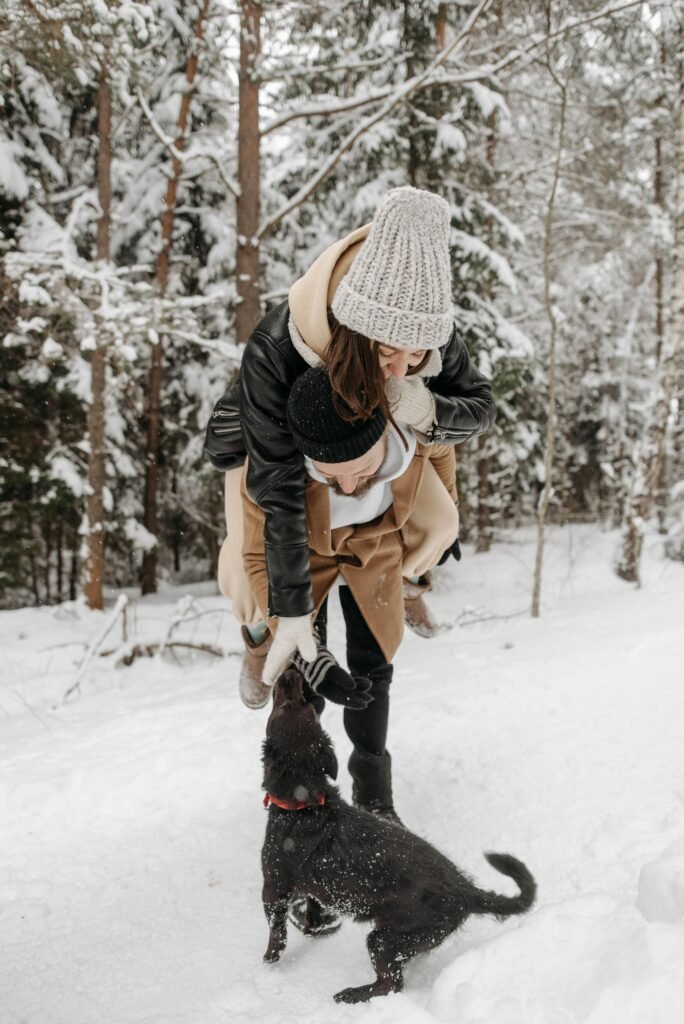Are you a proud dog owner who is struggling with crate training your furry friend? Look no further! This article is here to help you master the fundamentals of dog crate training. Whether you’re a beginner or just need a refresher, we’ll cover all the basics to ensure a smooth and successful training experience for both you and your pup. From choosing the right crate to teaching your dog to love their new space, we’ve got you covered every step of the way. Get ready to transform crate training from a daunting task into a rewarding and essential skill for your beloved canine companion.

This image is property of images.pexels.com.
Choosing the Right Crate
Size of the Crate
When choosing a crate for your dog, it’s important to consider the size that will provide optimal comfort and security. The crate should be large enough for your dog to stand, turn around, and lie down comfortably. However, it should not be too spacious that your dog can use one end for sleeping and the other end for elimination.
Type of Crate
There are different types of crates available in the market, such as wire crates, plastic crates, and soft-sided crates. Each type has its pros and cons. Wire crates provide good ventilation and visibility, but may not be suitable for dogs who tend to escape easily. Plastic crates offer more security and can be airline-approved, but may not be as well-ventilated. Soft-sided crates are lightweight and portable, but may not be as durable as the other types. Consider your dog’s needs and behavior to determine which type of crate is the best fit.
Materials and Durability
Regardless of the type of crate you choose, it’s important to ensure it is made of sturdy and durable materials. Dogs may scratch or chew on the crate, especially during the initial stages of crate training. Look for crates made of high-quality materials that can withstand such behavior. Additionally, make sure the crate has smooth edges and corners to prevent any injuries to your dog.
Setting up the Crate
Location of the Crate
The location of the crate plays a crucial role in ensuring your dog feels comfortable and safe. Place the crate in a quiet area of your home where your dog can have some privacy. Avoid placing it near noisy appliances or in high-traffic areas. The crate should be a place where your dog can retreat and relax. It’s also beneficial to keep the crate in a room where your family spends a lot of time, so your dog doesn’t feel isolated.
Creating a Comfortable Environment
Make the crate a cozy and inviting space for your dog. Line the bottom of the crate with a soft, comfortable bedding. Avoid using materials that your dog may chew on or ingest, like towels or old blankets. Opt for dog-specific bedding or crate pads that are safe and comfortable for your furry friend. Additionally, consider covering the crate with a lightweight blanket or crate cover to create a den-like atmosphere, providing a sense of security.
Introducing the Crate
Introduce your dog to the crate gradually, allowing them to explore and become familiar with it at their own pace. Start by leaving the crate door open and placing some treats or toys inside to entice your dog. Encourage them to enter the crate voluntarily and reward them with praise and treats. Avoid forcing or scaring your dog into the crate, as it may create a negative association. The goal is to make the crate a positive and pleasant place for your dog.
Getting Your Dog Acquainted with the Crate
Positive Association
To create a positive association with the crate, associate it with enjoyable experiences for your dog. Once your dog is comfortable entering the crate willingly, gradually close the door for short periods while they are inside. Provide treats, praise, or a favorite toy to reinforce positive behavior. Open the door before your dog shows signs of distress or discomfort, ensuring that being inside the crate is associated with positive experiences.
Mealtime and Treats
Incorporate your dog’s mealtime into crate training to further strengthen the positive association. Place your dog’s meal inside the crate, encouraging them to eat and spend time in the crate. If your dog is hesitant at first, start by placing the food just inside the crate and gradually move it deeper. This helps your dog view the crate as a rewarding and comfortable space. Similarly, offer treats or chews to your dog when they enter or settle down in the crate.
Using Toys and Blankets
Toys and blankets can play a significant role in helping your dog acclimate to the crate. Place your dog’s favorite toys or chew items inside the crate to keep them occupied and entertained. The familiar scent of the toys can provide comfort and reduce anxiety. Similarly, adding a blanket or clothing item with your scent can also help your dog feel secure in the crate. However, ensure that the items are safe and won’t pose any choking hazards.
Establishing a Routine
Consistent Schedule
Establishing a consistent routine is crucial for successful crate training. Dogs thrive on predictability, so it’s important to create a schedule that includes regular crate time. Set specific times for your dog to enter and exit the crate, making sure to stick to the schedule as closely as possible. Consistency helps your dog understand expectations and reduces anxiety associated with uncertainty.
Regular Potty Breaks
During crate training, it’s essential to take your dog outside for regular potty breaks. Dogs have a natural instinct to keep their sleeping area clean, so they may become distressed if they have to eliminate inside the crate. Take your dog outside to their designated potty area immediately after they are released from the crate. Gradually increase the duration between breaks as your dog becomes more comfortable and reliable with their potty training.
Rewarding Good Behavior
Positive reinforcement is key to encouraging good behavior in crate training. Whenever your dog enters the crate willingly or exhibits calm and relaxed behavior inside, reward them with verbal praise and treats. Consistently rewarding your dog for desired behavior helps them associate the crate with positive experiences and reinforces their understanding of what is expected of them.

This image is property of images.pexels.com.
Introducing Crate Time Gradually
Short Periods of Time
Start by leaving your dog in the crate for short periods while you are still at home. Begin with just a few minutes and gradually increase the duration. This helps your dog understand that being in the crate does not always mean you are leaving. Make sure to provide comfort and reassurance during this time, such as leaving a blanket with your scent or playing soothing music. Gradually extend the time spent in the crate over several days or weeks, based on your dog’s comfort level.
Increasing Duration
As your dog becomes more comfortable with being in the crate, gradually start leaving them alone for longer durations. This could be when running quick errands or taking a short walk. Increase the time spent in the crate in increments that your dog can comfortably handle. Monitor their behavior for signs of distress or anxiety and adjust the duration accordingly. Remember to always reward good behavior and provide positive reinforcement after crate time.
Gradual Separation
To help your dog adjust to being alone in the crate, introduce gradual separation. Start by moving out of sight for a few seconds and gradually increase the duration. It’s important to return before your dog becomes anxious or distressed. This gradual separation helps your dog build confidence and trust that you will return. Practicing this routine on a regular basis will help your dog become more comfortable with extended periods of crate time.
Dealing with Separation Anxiety
Gradual Teaspoon Method
If your dog experiences separation anxiety when crated, try the gradual teaspoon method. Fill a hollow chew toy, like a Kong, with a tasty treat or peanut butter. Give it to your dog just before crating and gradually increase the time it takes for them to finish it. This provides a positive distraction and helps your dog associate the crate with a pleasant experience. Over time, your dog will become more relaxed and less anxious while crated.
Desensitization Techniques
Desensitization techniques can be helpful in tackling separation anxiety. Start by performing actions that indicate you are leaving, such as picking up keys or putting on shoes, without actually leaving. This helps your dog become desensitized to these cues and gradually reduces their anxiety. Repeat these actions multiple times a day, gradually increasing the duration, until your dog remains calm and relaxed throughout the process.
Behavior Modification
If your dog’s separation anxiety persists despite your best efforts, it may be necessary to seek professional help. A certified dog trainer or behaviorist can provide guidance on behavior modification techniques tailored to your dog’s specific needs. They can help you identify and address the underlying causes of separation anxiety and develop a customized training plan to help your dog overcome their fear or distress.

This image is property of images.pexels.com.
Using the Crate for House Training
Controlled Environment
One of the primary uses of a crate is for house training or potty training. Since dogs naturally avoid soiling their sleeping area, the crate provides a controlled environment to encourage the development of bladder and bowel control. When your dog is inside the crate, they are less likely to have accidents in the house, allowing you to establish a consistent potty training routine.
Establishing a Potty Schedule
To effectively use the crate for house training, establish a consistent potty schedule for your dog. Take them outside to their designated potty area immediately after being released from the crate. Use verbal cues, such as “go potty,” to help them understand the desired behavior. Be patient and give them enough time to eliminate. Remember to reward them with praise and treats when they do their business outside.
Rewarding Elimination
When your dog eliminates outside, ensure you provide immediate positive reinforcement. Praise them enthusiastically and offer a tasty treat as a reward. This reinforces the behavior and helps your dog associate eliminating outdoors with positive experiences. Avoid punishing or scolding your dog for accidents inside the house, as this can create confusion and hinder the potty training process.
Avoiding Common Mistakes
Using the Crate as Punishment
It’s essential to avoid using the crate as a form of punishment. The crate should always be associated with positive experiences and not be used as a place of isolation or reprimand. Forcing your dog into the crate when they have misbehaved can create negative associations and make them resistant to entering voluntarily. Instead, use positive reinforcement and reward-based training to encourage desired behavior.
Leaving the Dog Inside for Extended Periods
It is not recommended to leave your dog inside the crate for extended periods of time, especially if they are not yet fully comfortable with crate training. Dogs are social animals and need regular interaction and exercise. Leaving them crated for long durations can lead to boredom, anxiety, and may even worsen separation anxiety. Make sure to balance crate time with playtime, exercise, and mental stimulation.
Inconsistent Training
Consistency is key when it comes to crate training. Inconsistency can confuse and delay the training process for your dog. Stick to the schedule and routine you establish, including crate time, potty breaks, and reward system. Consistent training helps your dog understand expectations and reinforces positive behavior. Avoid making exceptions or deviating from the established training plan to prevent confusion.
Troubleshooting Crate Training Issues
Excessive Barking or Whining
If your dog exhibits excessive barking or whining while in the crate, it’s important to address the underlying cause. Dogs may bark or whine due to discomfort, separation anxiety, or a need for attention. Make sure the crate is comfortable and that your dog has had enough exercise and mental stimulation. Desensitization techniques, providing calming music or white noise, and ignoring the behavior can also help reduce excessive vocalization.
Escape Attempts
Some dogs may try to escape from the crate during training, especially if they are feeling anxious or uncomfortable. If your dog attempts to escape, it may indicate that they need more time to adjust to the crate gradually. Ensure the crate is securely locked and reinforce positive associations with treats, toys, and comfortable bedding. If escape attempts persist, consult a professional trainer for additional guidance.
Regressing in Training
Occasionally, dogs may regress in their crate training progress. This can happen due to changes in routine, moving to a new environment, or experiencing stressful events. If regression occurs, revisit the basics of crate training and reinforce positive behaviors. Gradually reintroduce the crate and follow the initial training steps. Patience and consistency are key when helping your dog overcome regression and continue their crate training journey.
Gradual Crate Training
Gradual Introduction to Crate
Gradual crate training is the foundation for a successful crate training journey. By introducing the crate gradually and creating positive associations, your dog will develop a sense of comfort and security. Take your time and be patient with the process, allowing your dog to adjust at their own pace.
Teaching Basic Commands Inside the Crate
Once your dog is comfortable entering the crate willingly, you can start teaching basic commands while they are inside. Commands like “sit,” “down,” or “stay” can be practiced inside the crate, reinforcing positive behavior and creating a sense of structure. Use treats, praise, and patience during these training sessions to motivate and reward your dog for following your commands.
Increasing Time Spent Inside the Crate
As your dog becomes more accustomed to the crate, gradually increase the time they spend inside. Start with short durations and gradually extend them. Incorporate crate time into your daily routine, such as when you’re preparing meals, watching TV, or doing household chores. Ensuring your dog has a positive experience while spending longer periods in the crate will help them feel comfortable and secure.
By following these guidelines and employing patience, consistency, and positive reinforcement, you can successfully crate train your dog. Remember that each dog is unique, and crate training may take different amounts of time depending on their temperament and past experiences. Celebrate small victories along the way and always approach crate training with love, understanding, and a friendly tone.
